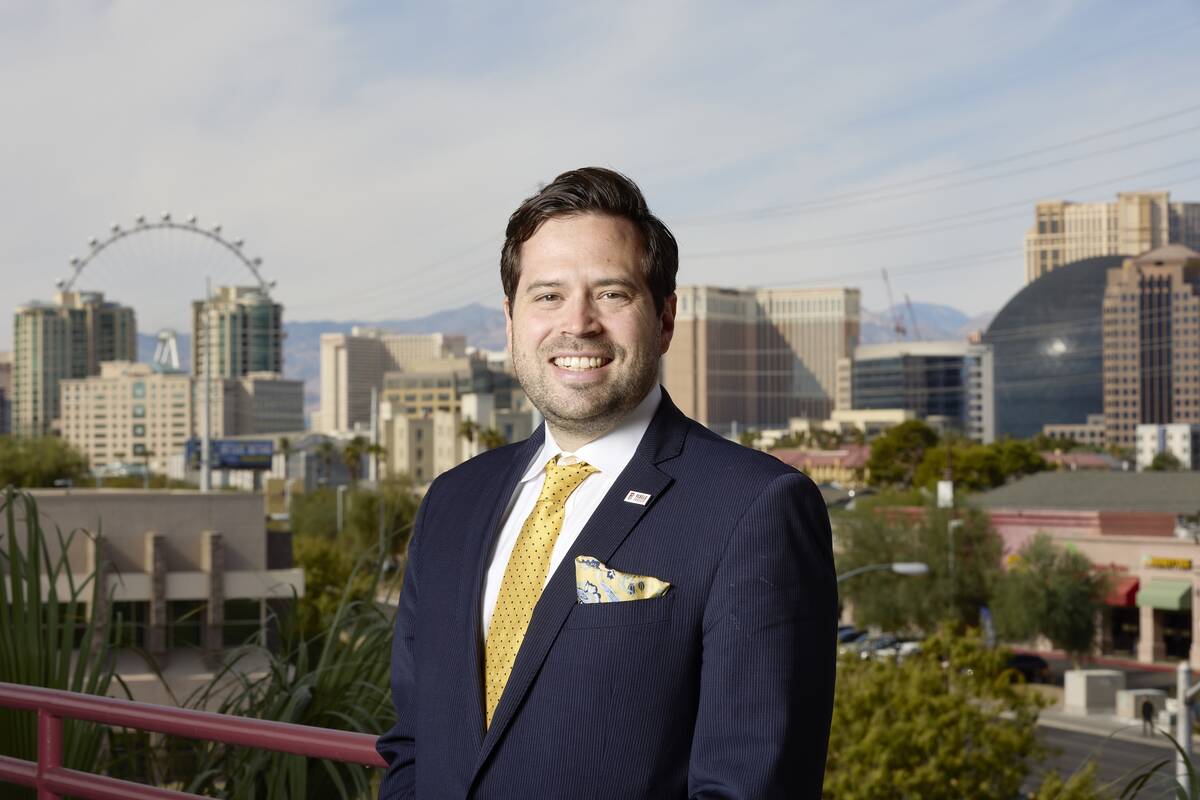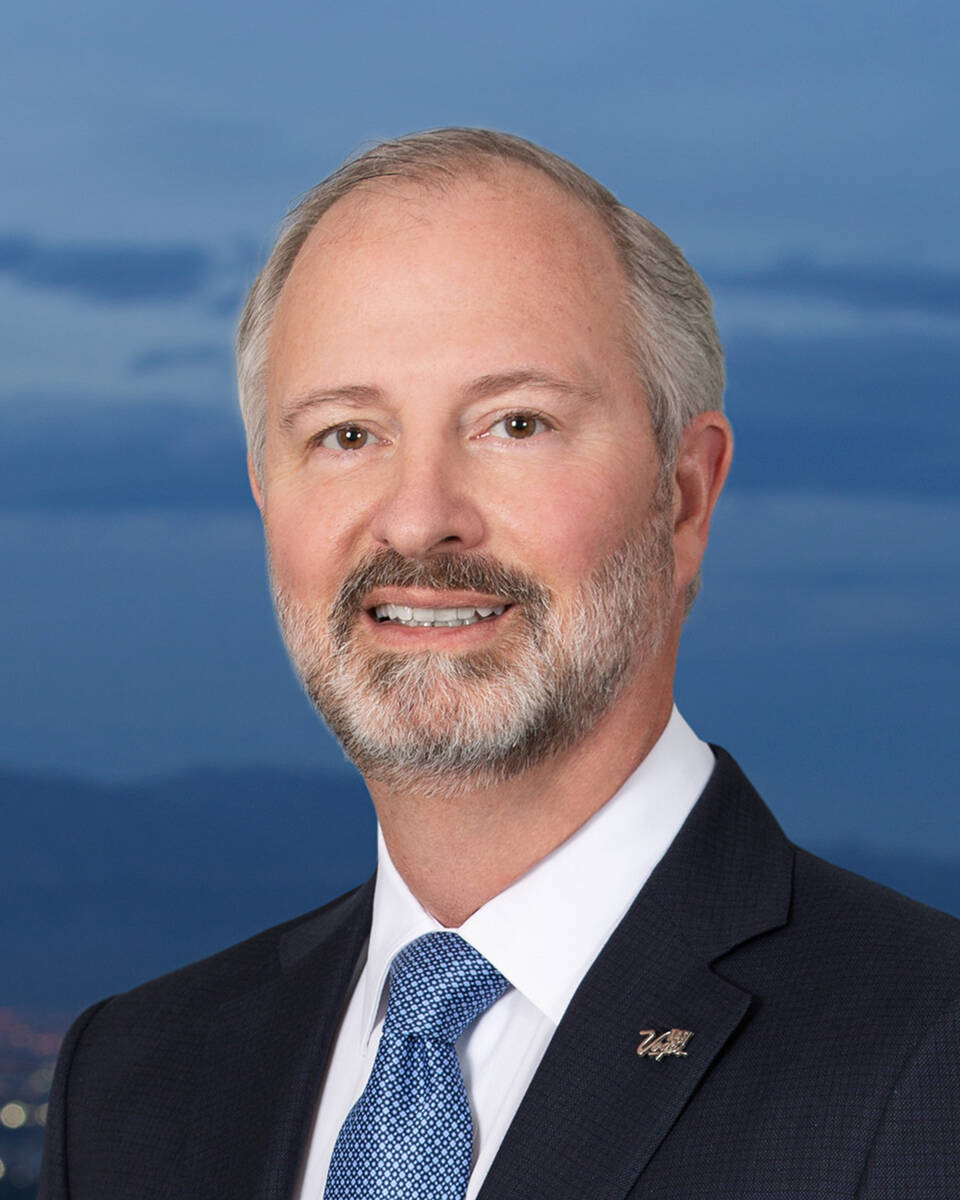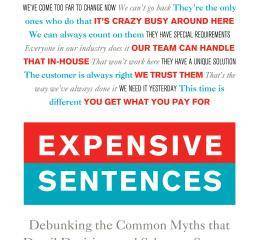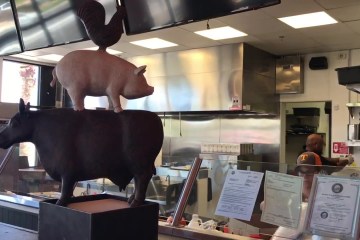The new president and CEO of the Las Vegas Global Economic Alliance said economic diversification will continue to be a priority, and that Southern Nevada can take advantage of opportunities with some communities being oversaturated and overpriced.
The LVGEA’s Danielle Casey said that’s possible but the region needs to better ascertain what the jobs of the future will be, decide what it wants to attract and develop plans toward that end. There continues to be a lot of interest in job-seekers wanting to work in the sports entertainment and hospitality industry, but there needs to be a focus on letting workers understand what the opportunities are and get them trained to handle those professions, she said.
“I think that’s a big interesting thing of consideration we will be looking at deeply,” Casey told business leaders at the NAIOIP Southern Nevada breakfast meeting Thursday at The Orleans. “Our business at LVGEA is looking at national site selection consultants whose entire job is to advise businesses on which markets to select. Our job is how do we keep ourselves in the running. My job is to get us on their list and keep us from getting knocked off their list. It’s always about the workforce and labor and controlling that narrative (with the headlines they read). We’re off the list before we even know we’re on it. We have to be extremely proactive in telling the story one by one.”
Casey said, however, she’s a proponent of celebrating what you have and leaning into and leveraging that. There’s no need to get away from what Las Vegas is good at when it comes to tourism and hospitality and doing so would be “a little nuts” but instead it’s about adding onto that.
Casey said there’s a lot of opportunities for Las Vegas with other markets across the country getting oversaturated and overpriced. She looks at competitive markets and midsize markets that have “really popped” and because they’re oversaturated, it puts Las Vegas in position and creates an “opportunistic time and our time” to jump in and take advantage of that.
“I don’t think anybody expected what happened in Nashville to happen in Nashville,” Casey said of that city’s growth and becoming a destination for companies and relocations. “Now, some of those markets are just getting really nice and full. Phoenix is getting far too expensive. I think we can take advantage of this moment in time.”
The NAIOP October meeting was entitled, the “Economy in Motion: Shaping What’s Next for Southern Nevada.” Other panelists included Steve Hill, CEO and president of the Las Vegas Convention and Visitors Authority; and Andrew Woods, director of the Center for Business and Economic Research at UNLV. Jamie Schwartz, UNLV Research Foundation director of business and industry engagement moderated the panel.
“We are cautiously stable right now in the economy,” Woods said after returning from a conference in Philadelphia where Federal Reserve Chair Jay Powell spoke to economists. “It’s very clear we’re the two-handed economists. There’s data out there’s still a lot of growth and opportunity but there’s a lot of warning lights out there going on like our labor market and inflation.
“There are three forces that are going to drive Southern Nevada and its economy in the coming years — some good and some bad,” Woods said. “The first one is population growth. We are forecasting an additional 387,000 more people living here in the next 10 years. That’s nine more net residents by the end of this breakfast. That’s good.”
The second force is jobs, Woods said. The fastest growth industry in Southern Nevada is health care followed by transportation and warehouse and professional services. Real estate is in the top five. The problem, he noted, is there’s less interest in health care jobs than there is in the No. 1 demand to work in hospitality and leisure.
“The point is there’s a lot of growth in jobs, but it’s not necessarily the jobs that match up with what workers are saying they want to go into,” Woods said. “There’s this gap, and we’re going to have to address that, especially given where we are at with immigration policy and that domestic migration (from California) might slow down, too. We’re going to have to find new ways to get workers into the workforce and what are the incentives around that.”
The third force is affordability, Woods said. He said he doesn’t think those pressures will be easing anytime soon, and there’s a lot of upside risks with inflation and stickiness of prices.
“We know homes in Las Vegas have gone up 50 percent in five years,” Woods said. “I still see prices going up and affordability continuing to be a concern.”
Affordable housing is considered a key factor in being able to attract companies to Las Vegas in the future, and Woods said that’s not something that can be done overnight. It’s going to take planning and having a vision will work as it did with lowering water usage.
“Let’s do the same thing with housing,” Woods said. “I know we want things to happen in six months, but it’s not going to happen in six months. It’s going to happen in six to 10 to 15 years. If we start now, we’re going to be in a much better place and our children will be in a much better place; and we will address that quality of life issue.”
With an additional 387,000 in population growth coming in the next decade, Woods said that’s equivalent to the size of Henderson.
“I know it is happening in smaller circles, but the state needs to say this is who we want to be and how we’re going to get there,” Woods said. “Part of that is working with CBER (Center for Business and Economic Research) and others on what are going to be impediments we have to remove. It’s a long list but if we can remove one here and there we can do it just like we’ve done with transportation, water and other areas.”
Hill told the audience that it’s noticeable that none of the industries pointed out by Woods for job growth deal with tourism and hospitality, and that’s been the case for a decade.
“We are a little over 300,000 employees in the industry in this valley right now,” Hill said. “If you look back at 2018, we were a little over 300,000 direct jobs in the industry. The growth of our industry is not a given, and I look at the projection of 4 million people here 20 years from now and wonder how much of this industry’s growth is factored into that. Whatever the case it is, it takes an exceptional amount of work by everyone in that industry to keep the gaming and hospitality industry at 300,000 employment. You have seen over the last several months how that has suffered a little bit.”
Las Vegas has had this conversation about diversification for the last 30 years. He said the large pay raises given to hospitality workers in the last couple of years continues to attract interest in that profession, and it’s also one reason why prices are higher in the destination along with higher food and beverage costs, and higher material costs.
As he has said previously, Hill dismissed suggestions that Las Vegas tourism and hospitality is on its deathbed and described that visitation in September picked up from August and expects an “exceptionally strong” showing over the next 15 months despite visitation numbers down 8 percent for the year.
“There’s no place like Vegas on earth,” Hill said. “People want to be here. It’s a little harder for some of them to be here now than in the past. We’ve seen a slowdown over the summer. We started to see a little uptick as we got to August. I’m seeing some preliminary numbers for September, and it’s probably going to be a little better than August. We feel like there’s a ramp out of this slowdown as we work through the rest of this calendar year. We have a great foundation of both group business, trade shows, sporting events, and (look at) the line up at Allegiant Stadium and at the Sphere. If you look at what drives people to Las Vegas, the next 15 months looks exceptionally strong. We’re excited that our long-term view of Vegas is very optimistic.”
The reason for the drop off in visitation is that people are in a worse off financial situation, and with casinos dealing with higher labor and other inflationary costs across the board that’s getting passed onto customers, Hill said. That has prompted Las Vegas resorts led by the LVCVA to offer promotions to spur more visitation.
Las Vegas has the Hard Rock Las Vegas on the Strip under construction at the former Mirage, and Bally’s plans to build a resort on the former Tropicana Las Vegas site where the A’s are constructing a $2 billion baseball stadium. Those could be the last two resort projects for several years, he added.
“I think it’s going to be a while,” Hill said. “The only pencils in Las Vegas for an integrated resort standpoint are very high-end right now. If you build a 5½ star resort, that is still an attractive option but on a smaller basis than the 3,000 or 4,000-room properties. That’s something in the 1,000-room range.”
The reason cited by Hill is that real estate investment trust deals in which resorts sold their land and lease it back are an obstacle to blowing properties on the south end of the Strip and rebuilding something that financially makes sense.
“Until interest rates come down, I don’t see properties being built on Las Vegas Boulevard in the resort corridor starting this decade. I would be surprised by that.”











